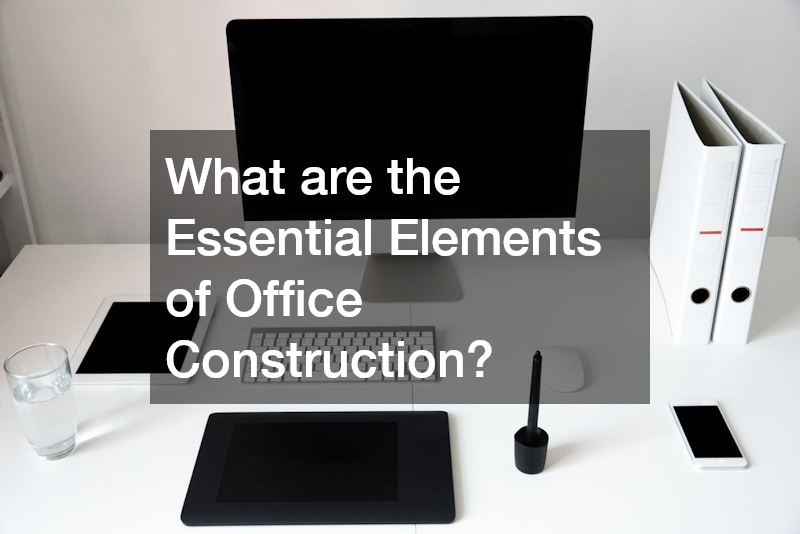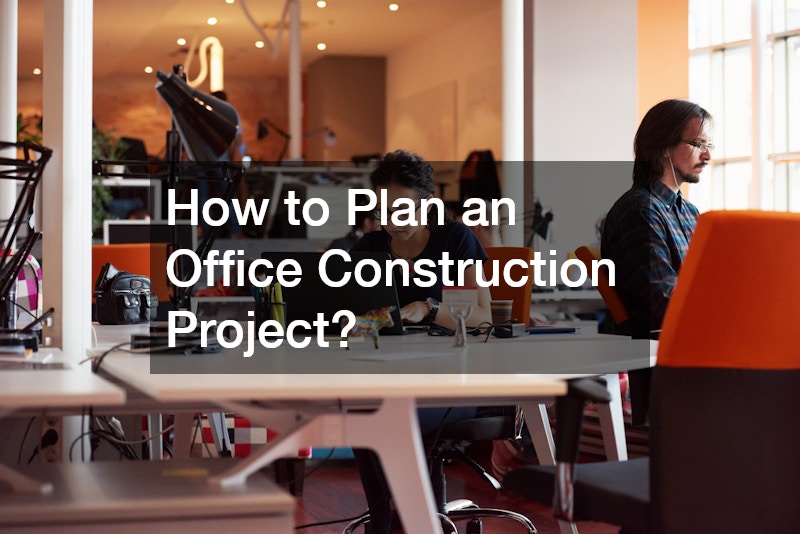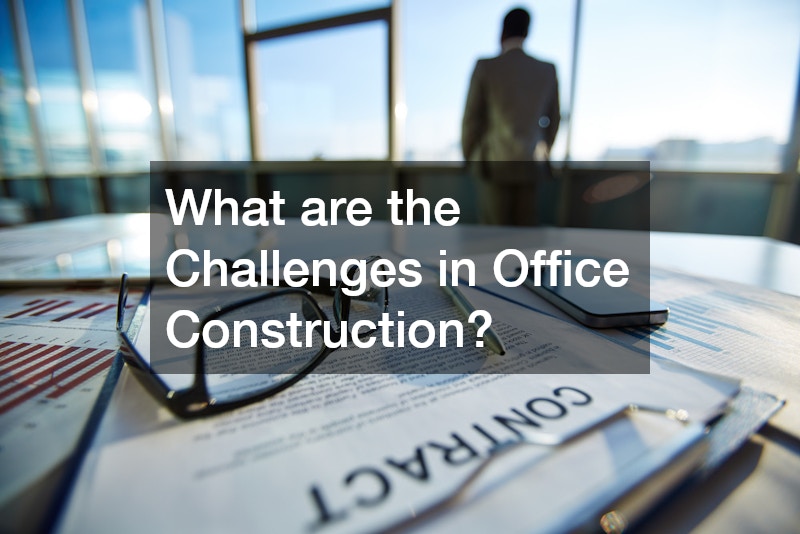In the modern business world, office construction is a pivotal aspect that impacts both productivity and employee satisfaction. A well-designed office can significantly enhance operational efficiency, foster creativity, and contribute to a positive work environment. This article presents ten innovative office construction ideas that every business owner should consider in their quest to create an optimal workplace.
Designing an office space involves more than just aesthetics; it encompasses functionality, sustainability, and adaptability. By implementing these construction ideas, businesses can create environments that are not only visually appealing but also conducive to the diverse needs of their workforce. Understanding the importance of office construction enables businesses to make informed decisions that align with their long-term goals and organizational culture.
The rapidly evolving business landscape demands office spaces that are versatile and capable of integrating the latest technological advancements. Therefore, an effective office construction strategy must consider current trends and anticipate future needs. Let’s explore the essential elements and strategies involved in realizing successful office construction projects.
What are the Essential Elements of Office Construction?

Core elements of office construction include space planning, structural design, and the selection of appropriate materials. These components form the foundation upon which an efficient and functional office environment is built. Commercial roofing companies play a crucial role in ensuring that the building’s top exterior is both durable and weather-resistant, safeguarding the internal workspaces.
Effective use of space is vital in office construction to accommodate different working styles and departmental needs. This requires strategic partitioning and modular designs that offer flexibility for future reconfigurations. Additionally, commercial contractors bring expertise in material selection, ensuring that construction projects adhere to sustainable practices and enhance the overall aesthetic of the space.
The integration of technology into office construction is another essential element. This involves installing modern communication infrastructure, ensuring robust internet connectivity, and incorporating smart building systems. Together, these elements create a cohesive environment that supports both the technological and human components of the workplace.
How Can Office Construction Improve Employee Productivity?
Well-planned office construction can significantly boost employee productivity by creating a comfortable and efficient work environment. For instance, incorporating natural light and ensuring proper ventilation can enhance employee morale and cognitive function. Commercial contractors often emphasize these aspects to facilitate an atmosphere where employees can thrive.
Ergonomically designed workstations and communal areas encourage collaboration and reduce physical strain, thus minimizing health-related absenteeism. The careful selection of furniture and workspace accessories by office construction teams is essential to achieving these goals. By fostering a sense of community and engagement, employees are more likely to contribute effectively to organizational objectives.
Additionally, constructing quiet zones or dedicated spaces for focused work can further enhance concentration levels. The ability to tailor environments to specific tasks is a hallmark of modern office construction. This flexibility allows for a dynamic work setup where employees can choose the setting that best suits their needs at any given time.
What are the Latest Trends in Office Construction?
Current trends in office construction are heavily influenced by the growing emphasis on sustainability and wellness. Incorporating green building practices, such as using energy-efficient materials and systems, aligns with corporate social responsibility goals. Many businesses are also focusing on biophilic design principles to bring elements of nature into the workspace.
Another prominent trend is the use of flexible spaces that can quickly adapt to changing business needs. This requires innovative construction techniques and materials, such as movable partition walls and modular flooring systems. The inclusion of multi-purpose areas that accommodate both individual and collaborative activities is becoming increasingly popular.
Innovations in parking lot concrete are being leveraged to improve both the aesthetics and functionality of exterior spaces. Developments in composite and permeable materials offer improved durability and environmental performance. This trend contributes to the overall efficiency and appeal of office buildings.
How to Plan an Office Construction Project?

Planning an office construction project requires a detailed understanding of both the immediate and future needs of the business. The initial phase involves conducting a needs assessment to identify objectives, budget constraints, and desired outcomes. Collaboration with commercial snow removal services ensures that exterior areas remain accessible and safe throughout the year.
Engaging with experienced commercial contractors at the planning stage helps in formulating practical timelines and mitigating potential risks. These professionals can provide valuable insights into material selection, cost estimation, and regulatory compliance. An effective plan should also include provisions for contingency management to handle unforeseen challenges during construction.
Incorporating input from various stakeholders, including employees and facility managers, is crucial for a well-rounded design. This participatory approach fosters a sense of ownership and ensures that the resulting office space meets diverse needs. The strategic integration of technology and sustainable practices should also be a key component of the planning process.
What are the Legal Considerations in Office Construction?
Office construction projects must comply with a myriad of legal and regulatory requirements that govern zoning, safety, and building codes. Engaging with commercial electricians is essential to ensure that all electrical installations meet the latest standards and regulations. Proper documentation and permits are necessary to avoid legal complications and potential project delays.
Workplace safety is paramount, and legal frameworks mandate specific standards to protect workers during construction. These regulations cover areas such as construction site management, equipment usage, and employee health guidelines. Adhering to these guidelines not only ensures safety but also safeguards the business from potential litigation.
Businesses must also consider accessibility standards as part of their legal obligations. Designing for inclusivity ensures that all employees, clients, and visitors can utilize the facilities without hindrance. This aspect of office construction aligns with broader societal goals of equality and nondiscrimination.
How to Incorporate Branding into Office Construction?
Office construction provides a unique opportunity to reinforce a company’s brand identity within its physical space. This involves integrating brand colors, logos, and values into the design elements of the workspace. The strategic collaboration with commercial HVAC services ensures that environmental comfort is maintained, consistent with the company’s brand promise of quality and care. A well-regulated climate not only supports employee productivity but also aligns with a business’s commitment to professionalism and wellness.
From the entrance lobby to individual workstations, branding can influence both the aesthetics and functionality of the office. Thoughtfully designed signage, custom furniture, and decor elements can reflect the organization’s ethos and culture. This not only boosts employee pride and identification with the company but also leaves a lasting impression on clients and visitors. Reception areas, in particular, act as the first touchpoint and can be designed to set the tone for the brand experience.
Incorporating brand narratives into internal and external communication spaces can further enhance engagement. Internal branding through mission statement walls, motivational graphics, or interactive digital displays serves as a constant reminder of organizational purpose and goals. Additionally, aligning collaborative spaces with brand values—such as sustainability or innovation—strengthens authenticity. A well-branded office environment does more than look attractive; it actively contributes to a cohesive corporate image and reinforces the company’s identity at every level.
What are the Challenges in Office Construction?

Office construction projects are not without their challenges, which can include budget constraints, time management, and resource allocation. Commercial gutters play a vital role in preventing water damage and ensuring long-term structural integrity, but their installation must be carefully coordinated to avoid disrupting other construction activities. If not managed properly, improper drainage can lead to costly repairs and affect the overall durability of the structure.
Managing stakeholder expectations and balancing diverse requirements can also present difficulties. Owners, designers, contractors, and tenants may all have different priorities, making it essential to set clear goals early on. Effective communication and project management are essential to navigate these complexities and ensure all parties are aligned and informed. Regular progress meetings, digital collaboration tools, and transparent reporting can help minimize misunderstandings. Adapting to changing needs and preferences during the construction phase is another common challenge, as modifications often impact both schedules and budgets.
Supply chain issues, especially in procuring construction materials, can cause delays and alter project timelines. Establishing relationships with reliable suppliers enables more accurate planning and risk management. Strategic contingency planning—such as maintaining backup vendors, ordering critical materials early, and allocating buffer time—helps address these challenges proactively and keeps projects moving forward with fewer disruptions.
How Can Office Construction Enhance Employee Well-being?
Constructing a workplace that prioritizes employee well-being is a growing trend among businesses seeking to enhance productivity and satisfaction. Incorporating elements such as natural lighting, green spaces, and ergonomic designs can drastically improve mental and physical health. Collaboration with a commercial plumber ensures that all plumbing systems support these wellness features through the provision of clean and efficient water services. High-quality water filtration systems, touchless fixtures, and well-maintained restrooms all contribute to a healthier and more hygienic environment.
Creating spaces that facilitate relaxation and social interaction is vital for maintaining employee morale. This may include break rooms, quiet zones, and leisure areas furnished with comfortable seating and recreational amenities. These spaces encourage downtime and foster a supportive work environment. Outdoor patios or rooftop gardens can also provide refreshing alternatives to indoor spaces, allowing employees to recharge during the day.
Acoustic control is another important aspect that mitigates noise pollution and promotes concentration. Incorporating sound-absorbing materials and techniques helps to create a noise-balanced environment conducive to various work activities. Temperature control and indoor air quality further enhance workplace comfort, reducing fatigue and illness. Such attention to detail not only contributes to an overall sense of well-being and employee satisfaction but also strengthens retention and attracts top talent.
What are the Cost-Saving Measures in Office Construction?
Adopting cost-saving measures in office construction without compromising quality is crucial for business sustainability. Engaging a commercial flooring contractor skilled in sourcing durable, low-maintenance materials can result in significant long-term savings. Additionally, the use of energy-efficient systems reduces operational costs while supporting eco-friendly business practices.
Modular design and prefabrication techniques are effective in minimizing both waste and labor costs. These approaches facilitate faster construction timelines and offer flexibility in future modifications. Collaborating with experienced commercial contractors can further optimize construction processes and resource utilization. For example, choosing materials that are locally sourced not only cuts down on transportation expenses but also supports regional businesses and reduces environmental impact.
Another important strategy is incorporating smart technologies during construction. Automated lighting, climate control, and monitoring systems may involve upfront investment but quickly pay for themselves through lower utility bills and reduced maintenance. Proper space planning also helps maximize usable square footage, avoiding unnecessary construction that adds to costs.
Government incentives for green buildings and sustainable construction practices can also alleviate financial burdens. Exploring tax credits and grants designed to encourage energy-efficient buildings presents valuable opportunities for cost reduction. When combined, these strategies create modern, cost-effective office spaces that remain efficient and adaptable for years to come.
How to Future-Proof Office Construction?

Future-proofing office construction involves preparing for anticipated changes in business operations and workforce needs. This requires a forward-thinking approach to design and material selection that accommodates potential technological advancements. Collaborating with commercial painters ensures that surfaces are prepared with durable finishes that withstand wear over time.
Flexibility in workspace design allows for the seamless integration of future office trends and technologies. Modular infrastructure is a key component, enabling quick adaptation to changes without significant reconstructions. This foresight helps businesses remain competitive and responsive to evolving industry demands.
Investing in robust IT infrastructure and scalable systems prepares workplaces for future digital transformation. Ensuring that building systems can easily accommodate new technologies reduces the need for disruptive retrofitting. A comprehensive understanding of office construction trends equips businesses to plan effectively for future growth and innovation.
Office construction is a complex yet rewarding endeavor for business owners. By considering these innovative ideas and insights, you can create a workplace environment that not only meets present needs but also adapts to future challenges and opportunities. A well-constructed office enhances employee satisfaction, boosts productivity, and safeguards the organization’s corporate image and physical assets.
Whether through the integration of cutting-edge materials or the strategic incorporation of brand elements, successful office construction offers multifaceted benefits. By prioritizing sustainability, flexibility, and employee well-being, businesses can achieve lasting value from their construction investments. This approach ensures that their physical workspaces continue to support their mission and objectives for years to come.


